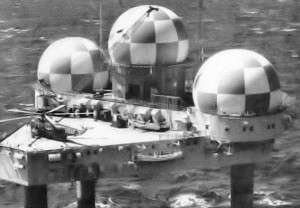"One barrel of wine can work more miracles than a church full of saints." Italian Proverb
In all the world's wine regions, there is confusion over the naming of some wine grapes; Is it Mataro or Mourvedre? Depends on where you live; Aussies prefer the former, French the latter. In a class by itself, though, Italian wine has a confusing jumble of grape, wine and town names.
Along the Italian peninsula there is a single red grape known by many different names. In the Tuscan region of Chianti, the main red grape is called Sangiovese, while in the hilltop Tuscan town of Montalcino, Sangiovese is known as Brunello. Vintners in Montepulciano, another hilltop town not far from Montalcino, refer to Sangiovese as Prugnolo Gentile.
And then there's this head-scratcher: Montepulciano is the name of a town, the renown Tuscan Vino Nobile di Montepulciano and, wait for it, a red grape that is not grown in Tuscany. However, the noble wine of Montepulciano is made from Prugnolo Gentile not the Montepulciano grape. And if that's not confusing enough, in Abruzzo, on the Adriatic Sea, there is a popular red wine called Montepulciano d'Abruzzo, made from the Montepulciano grape.
Did you get all that?
No worries. You can see from that little exercise, though, that the mix of Italian wines, grapes and town names can be as confusing as Italian politics. A few simple guidelines will help sort out the differences between Montepulciano uva, Montepulciano vino and Montepulciano citta.
The Montepulciano grape
In all of Italy, including the island regions of Sicily and Sardinia, there are 95 provinces, of which 20, mostly in central Italy, are suitable for the cultivation of the Montepulciano grape. The provinces of Abruzzo, Marche, Molise and Puglia, along the eastern side of Italy, on the Adriatic Sea, are where the Montepulciano grape is most widely planted.
| Montepulciano vineyard in Abruzzo |
Montepulciano is a late ripener, thus the warmer planting zones in the center of the peninsula are best. Farther north, closer to the Alps, the climate is too cool for the grape to ripen fully, and further south, in parts of Puglia, the Montepulciano grape can get overripe fast. Nevertheless, growers always looking for new places to grow quality wine grapes, have found that the Montepulciano grape does reasonably well in landlocked Umbria and along the Tuscan coastline in Maremma.
When planted in an optimal area, Montepulciano produces wines deep in color, packed with fruit and supported by firm robust tannins. These qualities make Montepulciano a good addition to red blends needing a boost.
The Montepulciano wines
Despite the name similarities, the Vino Nobile di Montepulciano and Montepulciano d'Abruzzzo wines are different. In fact, some would say the two wines have little in common. Let's take a closer look.
Sangiovese, Prugnolo Gentile; is this just a name difference or are the two grapes the same? Depends on who you ask. Locals say that Sangiovese grown in the vineyards around Montepulciano, gives a fuller wine with deeper color, than say, Chianti, but not as big and deeply hued as Brunello.
The taste of Sangiovese is often described as dark fruits like blackberry, with floral and herbal notes. Prugnolo Gentile in Vino Nobile is more dark cherries, sweet herbs, brisk acidity and full tannins.
Reliable Vino Nobile di Montepulciano Producers: Avignonesi, La Braccesca (Antinori), Ettore Falvo, Il Macchione, Poliziano, Di Ricci, Valdipatta
Montepulciano d'Abruzzo is a different wine, mostly because it is made from the Montepulciano grape and not Sangiovese. The Montepulciano grape is a vigorous late-ripening variety with robust tannins and ripe flavors. The flavor profile is more rustic, although wineries in Abruzzo are working to refine Montepulciano's flavors. To that end, Montepulciano d'Abruzzo Coline Teramare has earned DOCG status.
Reliable Montepulciano d'Abruzzo Producers: Cataldi Madonna, Centorame, Citra, Farnese, Pasetti, Valentini
The Montepulciano city
Montepulciano, in the Tuscan province of Siena, has the distinction of being mentioned as one of the most beautiful towns in Italy. Having been there a few times, I would agree.
| Piazza Grande, Montepulciano |
Like most small Italian towns, Montepulciano is chock-a-block with historic buildings, presented in a variety of architectural styles. Three hundred years before the 19th century unification, known as Risorgimento, Montepulciano boasted a large enough population to support three major churches. One of those, the Duomo, houses an historic triptych above its altar.
-o0o-
The proverb above is from "The Quotable Wine Lover," Kate Fiduccia, The Lyons Press
Next Blog: America's First Wine Expert
Comments? Suggestions? Email me at boydvino707@grmail.com





